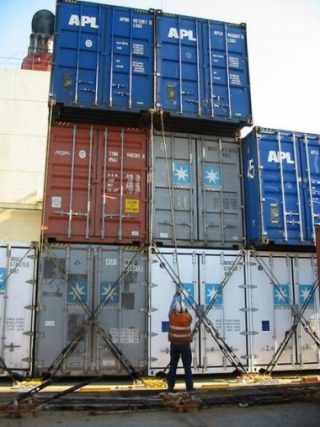
Canada needs to stop wasting the talent of skilled immigrants
by Gabriela Novotna, Associate Professor of Social Work, University of Regina; Marina Morgenshtern, Assistant Professor, Social Work, Trent University
Researchers say we need to challenge the way we think about skilled immigrants’ employment integration and remove the barriers such as the “Canadian experience” requirement.

Economists say Canadian companies need to develop a competitive advantage by recruiting skilled executives, working on market knowledge and innovation and building international networks PHOTO: Danny Cornelissen, via Wikimedia Commons
Neoliberal democracies across the world have looked up to Canada as a leader in economically driven immigration.
The merit-based immigration system was used to fill labour market shortages and has been a go-to solution to the country’s aging population and recently, the post-pandemic economic recovery.
We recently undertook a Photovoice project, Take a Walk in My Shoes, with recent immigrants who shared their experiences of securing professional employment in Durham, Ont., through photographs and interviews depicting their lives. The goal of the project was to explore their experiences, identify gaps in employment services and have skilled immigrants propose solutions to those gaps.
Labour market integration?
There is a broad consensus in society that labour market integration of immigrants is the most critical indicator of their success in their new home country. However, deskilling and underemployment of immigrants has been well documented.
Perceiving immigrants as unable to get their credentials recognized by professional bodies in Canada and their “cultural differences” as standing in the way of their successful career development have been part of public sentiment.
Research suggests that the Canadian skilled immigration policy is also grounded in the belief that educational and professional credentials guide immigrants toward professional success in Canada.
However, the collective story of immigrants seeking professional employment (illustrated by a photograph by one of the participants, Bushra) suggests that while Canada has opened the door to some, “it only leads to a brick wall on the other side.”
A catch-22
A roadblock to securing professional employment for those who permanently moved to Canada — a country claiming to need their skills — is lack of “Canadian experience,” a condition based on an elusive and often misused concept that tends to exclude and discriminate racialized immigrants.
The requirement to have Canadian experience to be hired cannot be acquired unless one gets hired. So it is not surprising that skilled immigrants experience labour market integration that is devalued and relegated to precarious, dead-end jobs.
Our research proposes that emphasis on new skilled immigrants’ personal responsibility for integration into the labour market downplays the role of immigration policies and exclusionary attitudes toward them.
The necessity of volunteering services to demonstrate the “fit” for the Canadian work environment, or the ubiquity of the “start from the bottom” narrative as a rite of passage for those who came to Canada with credentials and professional skills, has been captured in the photographs and stories of our research participants.
One participant said a settlement worker told them the accreditation and licensing process is overwhelmingly complicated and long in order to discourage applicants, and that “[v]ery few of our engineer clients pass through the process successfully.” The participant was later offered a survival job in a warehouse: “I realized that [the settlement worker] was completely right about the licensing process and the regulating organizations, so I decided to burn my degree and start from scratch in a field I like.”
Many skilled immigrants experience challenges in job market integration as a personal failure and often consider leaving the country soon after arriving.
Those who remain regularly end up working dead-end jobs, with many internalizing society’s narrative about their own inadequacy.
Some immigrants, however, don’t lose sight of their pre-immigration accomplishments and understand the role of the system in their plight. One of our participants said:
“I feel like red wine inside [that] bottle. [The] wine that has a complex flavour. From where I came from, I was infused with training, skills and experience — and I felt well-seasoned. I thought I was half-full. Ready to offer what I have. But then, employers have viewed me as half-empty. Not bearing the “made in Canada” label, not bearing any Canadian exposure. I needed to be reprocessed and go through quality control despite the richness of my experience.”
Moving beyond the job search
The government response to the gap between skilled immigrants’ potential and their professional job integration often includes “job search skills training” programs.
Although an important part of labour market integration, utilizing the training and doing everything by the book did not prevent participants in our study from being judged, dealt with suspicion, ghosted by recruiters and employers or outright exploited during their internships or volunteering efforts.
So, do education and professional credentials lead to the successful integration of skilled immigrants? In short, no.
It is clear that we need to challenge the way we think about skilled immigrants’ employment integration and remove the barriers such as the “Canadian experience” requirement. We also need to stop expecting immigrants to be resilient to the challenges they experience and search for solutions to problems that no one should need the resilience to survive in the first place.
This article is republished from The Conversation under a Creative Commons license. Read the original article.